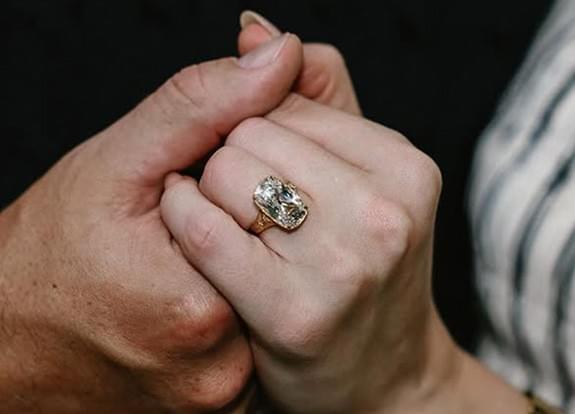The Price of “I Do” Is Rising
Engagement rings and fine jewelry are getting far more expensive these days. Gold prices have surged, supply chain issues and tariffs (e.g. on imports from India) have conspired to push up costs. Even for couples trying to stick to a modest budget, the same ring now costs considerably more than just a few years ago.
Shape, Design & Smart Alternatives
Some people, like Haley Hayes in Ohio, are turning toward alternatives—sapphire centers, elongated or emerald-cut stones that look large without the cost of large carats. These design tricks allow a showy effect without breaking the bank. It's a smart move in a world where ethical jewelry buyers also want transparency in materials, sourcing, and craftsmanship.

Lab-Grown Diamonds: The Shift Accelerates
Jewelry experts increasingly recommend lab-grown diamonds as a way to avoid inflated natural stone prices. Lab-grown options deliver comparable sparkle at lower cost, plus more control over origin and certification. For many who care about both aesthetics and values, this shift feels inevitable.
Tariffs, Purity & Hidden Costs
Rings are pricier not just because of the stone. Tariffs, metals, labor, gold purity, marketing, and brand prestige all add up. Buyers often overlook insurance, maintenance, and sales taxes—but these can quietly double a ring’s lifetime cost. sustainable gemstones or recycled metals can soften the blow, provided you know what you're buying.
My Take
As a writer watching this price boom, I feel for anyone wanting that perfect ring. Inflation + metal costs are real. But luxury brands also rely heavily on image, trend, prestige. If buyers demand more ethics, more materials transparency—and yes, alternatives like lab-grown options—then the future of engagement rings may look less about 1-carat prestige and more about meaning, values, and sustainable choices.
